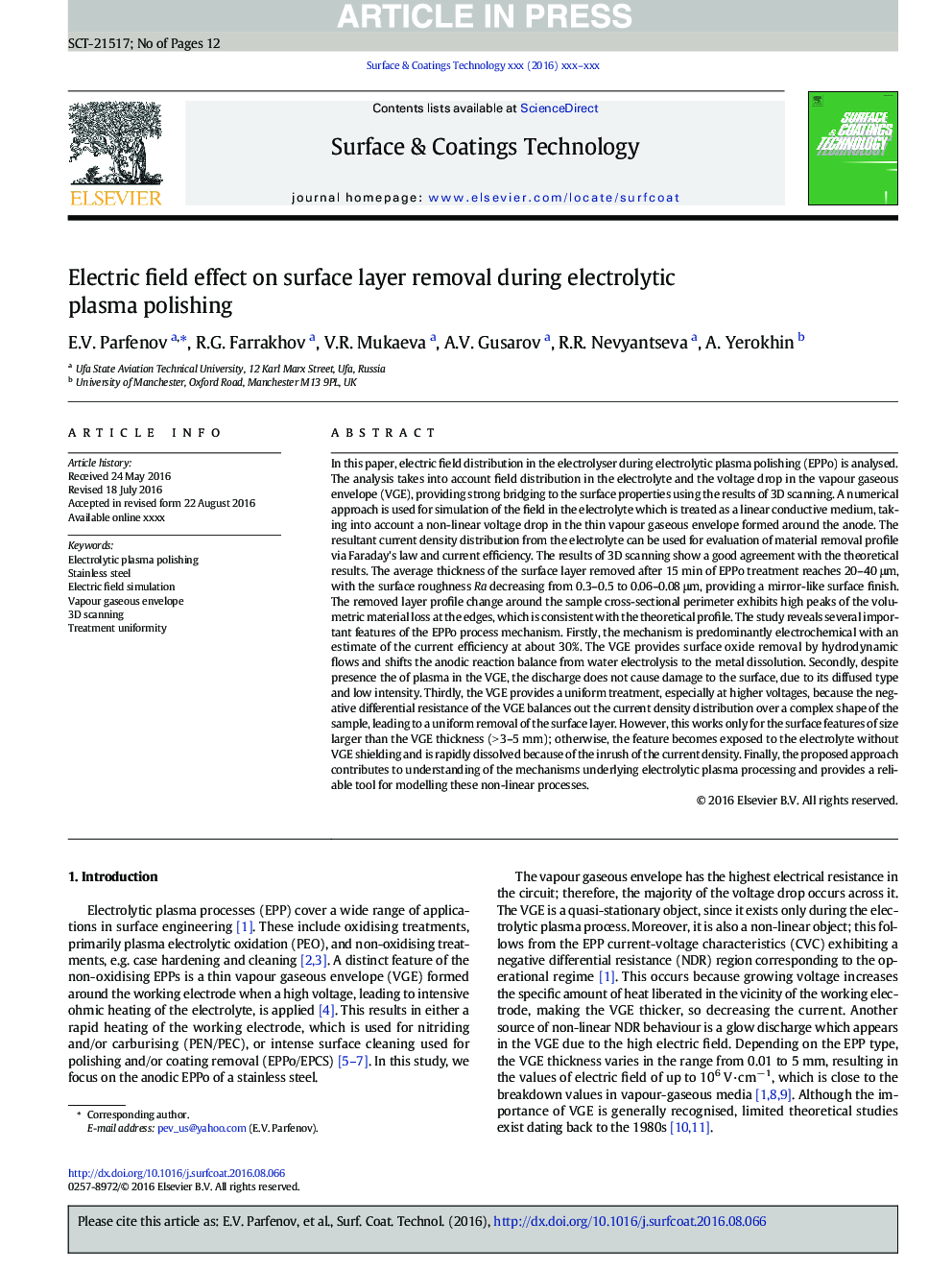| کد مقاله | کد نشریه | سال انتشار | مقاله انگلیسی | نسخه تمام متن |
|---|---|---|---|---|
| 5465701 | 1398881 | 2016 | 12 صفحه PDF | دانلود رایگان |
عنوان انگلیسی مقاله ISI
Electric field effect on surface layer removal during electrolytic plasma polishing
ترجمه فارسی عنوان
اثر میدان الکتریکی بر روی حذف سطح لایه در هنگام پرداخت پلاسما الکترولیتی
دانلود مقاله + سفارش ترجمه
دانلود مقاله ISI انگلیسی
رایگان برای ایرانیان
کلمات کلیدی
موضوعات مرتبط
مهندسی و علوم پایه
مهندسی مواد
فناوری نانو (نانو تکنولوژی)
چکیده انگلیسی
In this paper, electric field distribution in the electrolyser during electrolytic plasma polishing (EPPo) is analysed. The analysis takes into account field distribution in the electrolyte and the voltage drop in the vapour gaseous envelope (VGE), providing strong bridging to the surface properties using the results of 3D scanning. A numerical approach is used for simulation of the field in the electrolyte which is treated as a linear conductive medium, taking into account a non-linear voltage drop in the thin vapour gaseous envelope formed around the anode. The resultant current density distribution from the electrolyte can be used for evaluation of material removal profile via Faraday's law and current efficiency. The results of 3D scanning show a good agreement with the theoretical results. The average thickness of the surface layer removed after 15 min of EPPo treatment reaches 20-40 μm, with the surface roughness Ra decreasing from 0.3-0.5 to 0.06-0.08 μm, providing a mirror-like surface finish. The removed layer profile change around the sample cross-sectional perimeter exhibits high peaks of the volumetric material loss at the edges, which is consistent with the theoretical profile. The study reveals several important features of the EPPo process mechanism. Firstly, the mechanism is predominantly electrochemical with an estimate of the current efficiency at about 30%. The VGE provides surface oxide removal by hydrodynamic flows and shifts the anodic reaction balance from water electrolysis to the metal dissolution. Secondly, despite presence the of plasma in the VGE, the discharge does not cause damage to the surface, due to its diffused type and low intensity. Thirdly, the VGE provides a uniform treatment, especially at higher voltages, because the negative differential resistance of the VGE balances out the current density distribution over a complex shape of the sample, leading to a uniform removal of the surface layer. However, this works only for the surface features of size larger than the VGE thickness (> 3-5 mm); otherwise, the feature becomes exposed to the electrolyte without VGE shielding and is rapidly dissolved because of the inrush of the current density. Finally, the proposed approach contributes to understanding of the mechanisms underlying electrolytic plasma processing and provides a reliable tool for modelling these non-linear processes.
ناشر
Database: Elsevier - ScienceDirect (ساینس دایرکت)
Journal: Surface and Coatings Technology - Volume 307, Part C, 15 December 2016, Pages 1329-1340
Journal: Surface and Coatings Technology - Volume 307, Part C, 15 December 2016, Pages 1329-1340
نویسندگان
E.V. Parfenov, R.G. Farrakhov, V.R. Mukaeva, A.V. Gusarov, R.R. Nevyantseva, A. Yerokhin,
